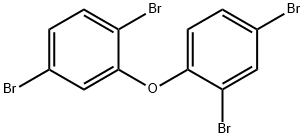Kulkarni, Pushkar, 2005.Polyhalogenated organic pollutants in amphibians. Smart memory v1 1 1. Second cycle, A1N, A1F or AXX ( AXX). Uppsala: SLU, Dept. of Biomedical Sciences and Veterinary Public Health
| PDF 1MB |
Toast 18 pro. Commercial pentabromodiphenyl ether (c-PentaBDE) refers to complex mixtures of congeners, in which the main components are BDE-47 and BDE-99 and they have the highest concentration by weight with respect to the other components of the mix. Master of Environmental Toxicology. But they have been largely unstudied in this context. 2,2',4,4',5‐Pentabromodiphenyl ether (BDE‐99.
Abstract

Polyhalogenated organic pollutants are xenobiotics, which are believed to cause considerable environmental pollution and human health problems as a result of their persistence, toxicity, and transformation into hazardous metabolites. These chemicals are persistent and are biomagnificated in the ecosystem. Amphibians (frogs) are considered as reliable indicators of environmental health because they form an important link in the food chain between insects and vertebrates. Furthermore, they are inhabitants of both
aquatic and terrestrial environments and occupy different positions in the food web at different stages of their life cycle. The different stages in the life cycle of frogs are tadpole, juvenile and adult stages.
The tadpole is transformed to a juvenile frog by metamorphosis. Disruption of this life cycle by xenobiotics can have disastrous effects on the amphibian populations. Polyhalogenated organic compounds have been known to cause endocrine disruption, effects on gene expression and induction of cytochrome P 450 enzymes in frogs. The present study was conducted to compare the tissue disposition of a polybrominated compound, 2, 2', 4, 4', 5-
pentabromodiphenyl ether (BDE 99) in tadpole and juvenile stages of Xenopus tropicalis (West African clawed frog). The study was performed using whole-body autoradiography and scintillation counting at different time intervals after dietary exposures of 14CBDE 99 at stage 54 (tadpoles) and stage 66 (juvenile frogs). From the results of the study it was concluded that there was a significant
difference between the uptake and retention of the chemical between tadpoles and frogs. Smultron 11 text editor 11 1 3. Juvenile frogs had higher uptake and retention of the radio labelled chemical than tadpoles. The substance was retained in adipose tissue over 64 days in both stages. However, the localisation of substance was similar in both stages.
| Main title: | Polyhalogenated organic pollutants in amphibians |
|---|---|
| Authors: | Kulkarni, Pushkar |
| Supervisor: | UNSPECIFIED |
| Examiner: | UNSPECIFIED |
| Series: | Report/International Master of Science Programme, Faculty of Veterinary Medicine, Swedish University of Agricultural Sciences |
| Volume/Sequential designation: | 51 |
| Year of Publication: | 2005 |
| Level and depth descriptor: | Second cycle, A1N, A1F or AXX |
| Student's programme affiliation: | MSCVE Master of Science Programme in Veterinary Medicine 90 HEC |
| Supervising department: | (VH) > Dept. of Biomedical Sciences and Veterinary Public Health |
| Keywords: | 2, 2', 4, 4', 5-pentabromodiphenyl ether, BDE 99, PBDE, tissue disposition, frogs, Xenopus tropicalis, polyhalogenated organic pollutants |
| URN:NBN: | urn:nbn:se:slu:epsilon-s-764 |
| Permanent URL: | http://urn.kb.se/resolve?urn=urn:nbn:se:slu:epsilon-s-764 |
| Subjects: | Animal ecology Animal diseases |
| Language: | English |
| Additional Information: | Överförd från avhandlingsarkivet/Transferred from the Dissertations and Graduate Thesis Archive |
| Deposited On: | 21 Nov 2011 10:50 |
| Metadata Last Modified: | 20 Apr 2012 14:23 |
Master Of Typing 2 4 4 5 Pentabromodiphenyl Ethereal
Repository Staff Only: item control page

